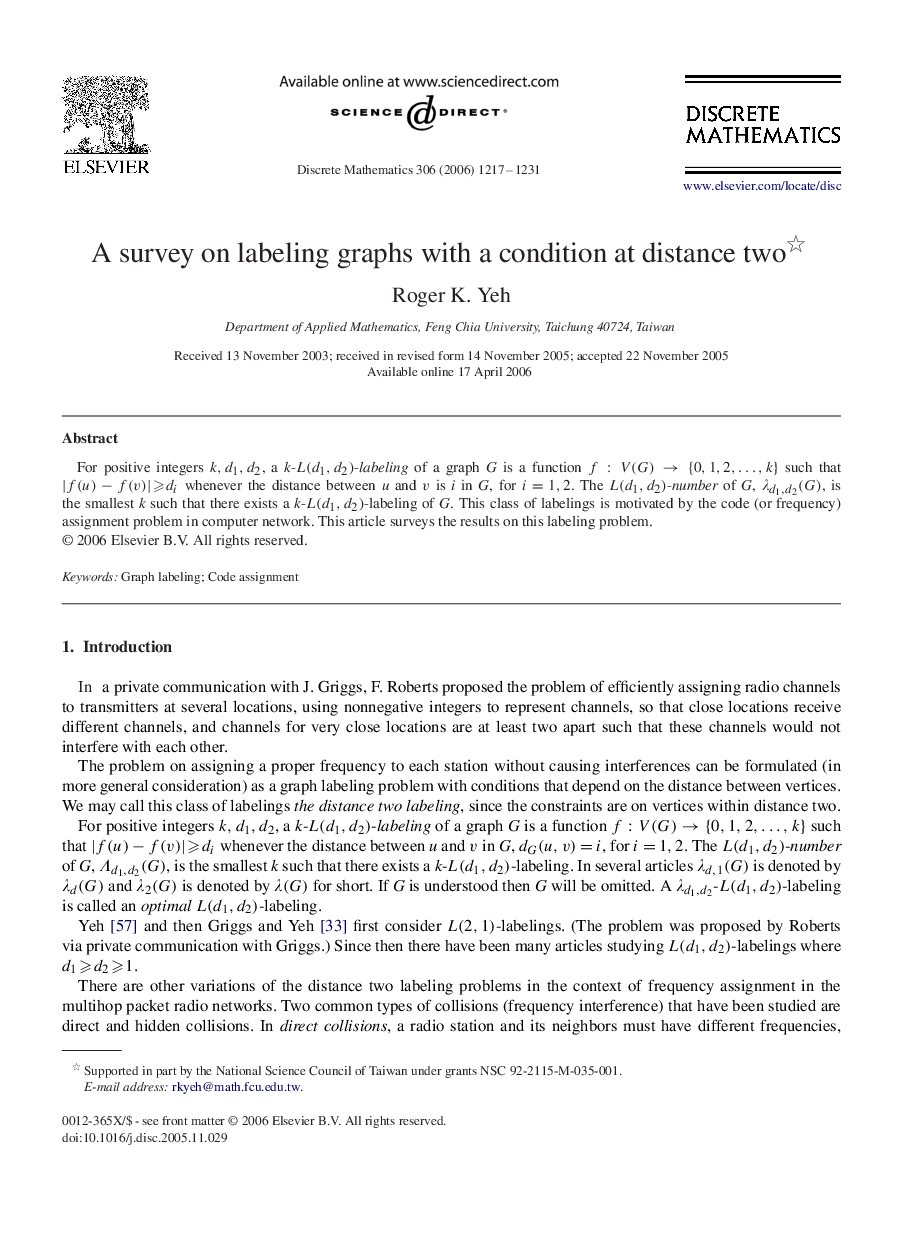| Article ID | Journal | Published Year | Pages | File Type |
|---|---|---|---|---|
| 4649231 | Discrete Mathematics | 2006 | 15 Pages |
Abstract
For positive integers k,d1,d2k,d1,d2, a k -L(d1,d2)L(d1,d2)-labeling of a graph G is a function f:V(G)→{0,1,2,…,k}f:V(G)→{0,1,2,…,k} such that |f(u)-f(v)|⩾di|f(u)-f(v)|⩾di whenever the distance between u and vv is i in G , for i=1,2i=1,2. The L(d1,d2)L(d1,d2)-number of G , λd1,d2(G)λd1,d2(G), is the smallest k such that there exists a k -L(d1,d2)L(d1,d2)-labeling of G. This class of labelings is motivated by the code (or frequency) assignment problem in computer network. This article surveys the results on this labeling problem.
Keywords
Related Topics
Physical Sciences and Engineering
Mathematics
Discrete Mathematics and Combinatorics
Authors
Roger K. Yeh,
